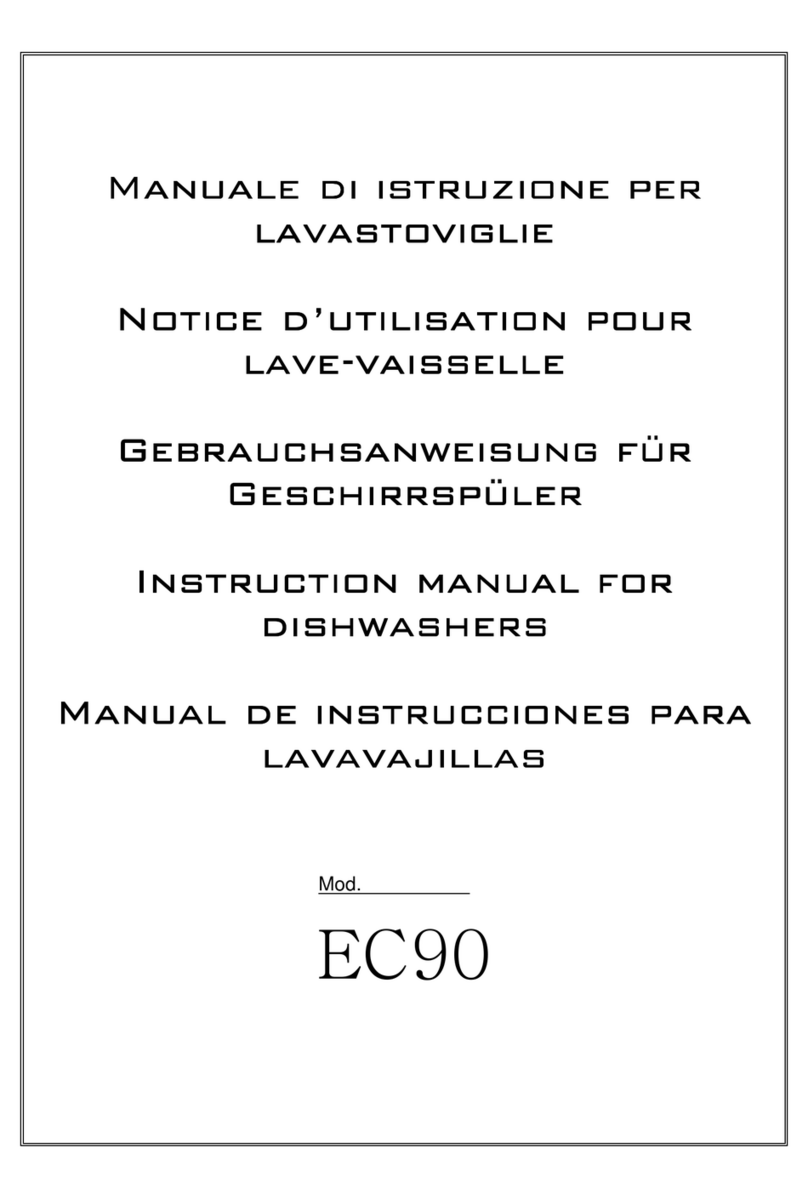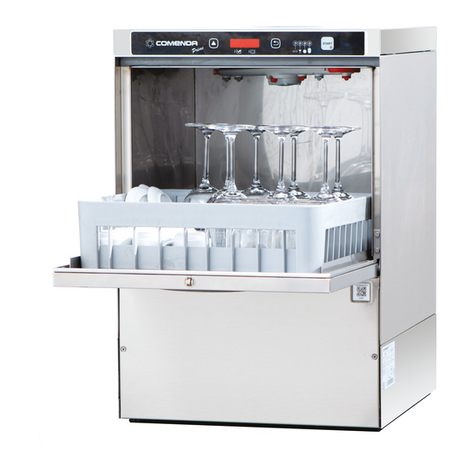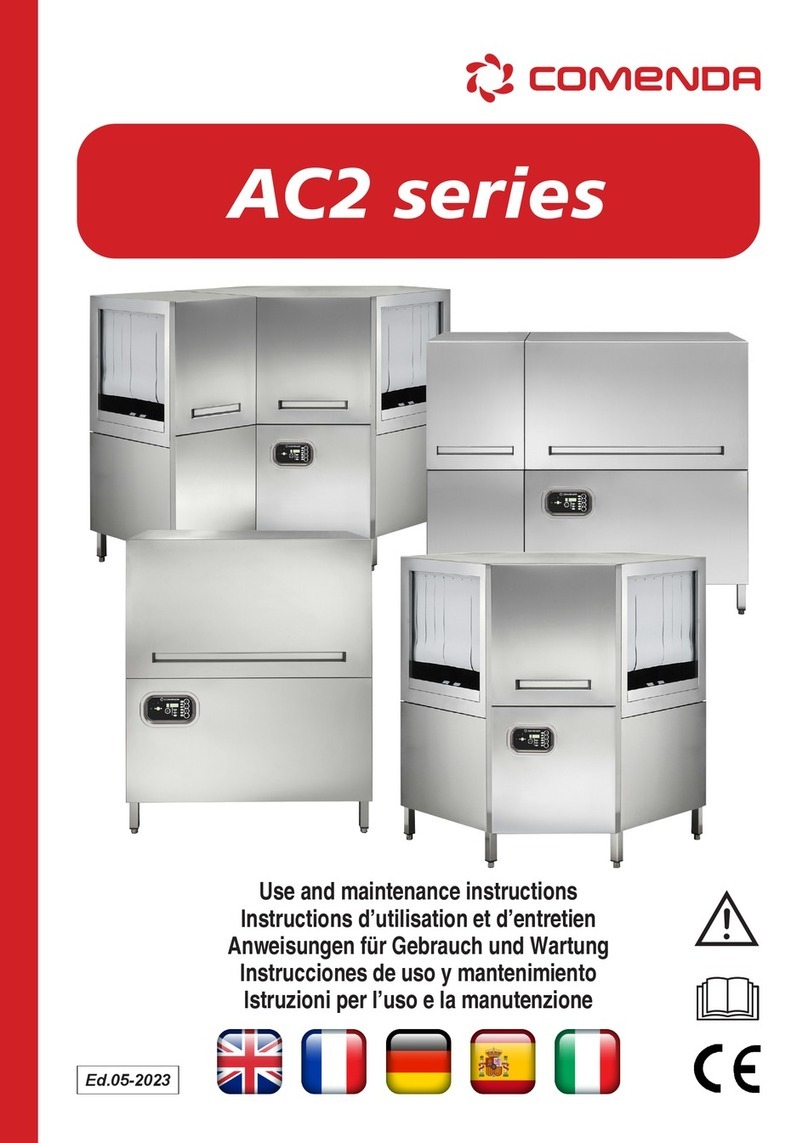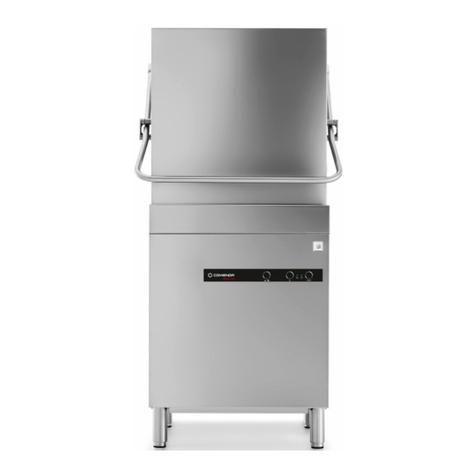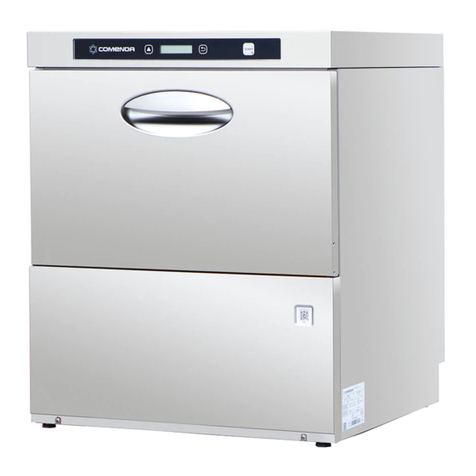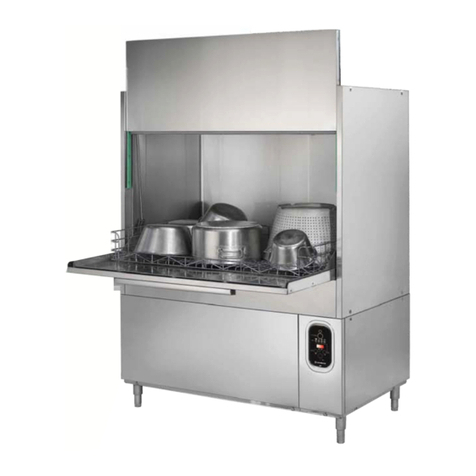INSTRUCTIONS FOR THE USER
40
USEFUL SUGGESTIONS
1) MAINTENANCE
IMPORTANT: Before carrying out the cleaning and maintenance operations,
disconnect the equipment from the electric supply.
Frequently check and clean the nozzles. The frequency of this operation will
depend on the quantity of residues, which may result in an unsatisfactory
washing result.
For the inside and outside cleaning of the machine, do not use corrosive
products such as sodium hypochlorite (bleach) savelling water and
hydrochloric acid, acids, steel wool or steel brushes.
The presence of calcium and magnesium salt in the water can compromise
machine performance, thus ask qualified personnel to remove the deposits
periodically.
In order to avoid some oxidation risks, or chemical reactions, generally the
stainless steel surfaces have to be well cleaned.
2) OPTIMAL RESULTS:
A possible wash deficiency can be noticed when residue remains.
Marks can be caused by an insufficient rinse: in this case check that the rinse
nozzles are clean and that there is sufficient water supply pressure.
In case of dishware residue check that:
•the washing nozzles are clean
•the water temperature is around 60°C
•there is detergent
•the pump suction filter is clean
•the racks are suitable for the dishes and cutlery that are to be washed
•the position of the cutlery and the dishes in the racks are correct
3) TEMPORARY MACHINE NON-USE
In case the machine is stopped for some weeks, it is recommended before
closing it to fill the tank and run the machine with clean water, then empty it
out, in order to avoid the forming of bad odour and that any residue remains in
the pump.
If necessary repeat this operation until the water leaving the machine is clean.
If the machine is stopped for many weeks, it is recommended to oil the
stainless steel surfaces with paraffin oil and to discharge the water from the
boiler and the electric pump.
4)SANITISING THE MACHINE
Sanitising the machine at least once a week is of the utmost importance in
order to guarantee hygiene even when the machine is not in use.
It is advisable to use a disinfecting product suggested by an authorised
detergent dealer.
The use of this product will satisfy hygienic requirements, even during
machine non use.
Before switching off the machine run the machine briefly with clean water.

